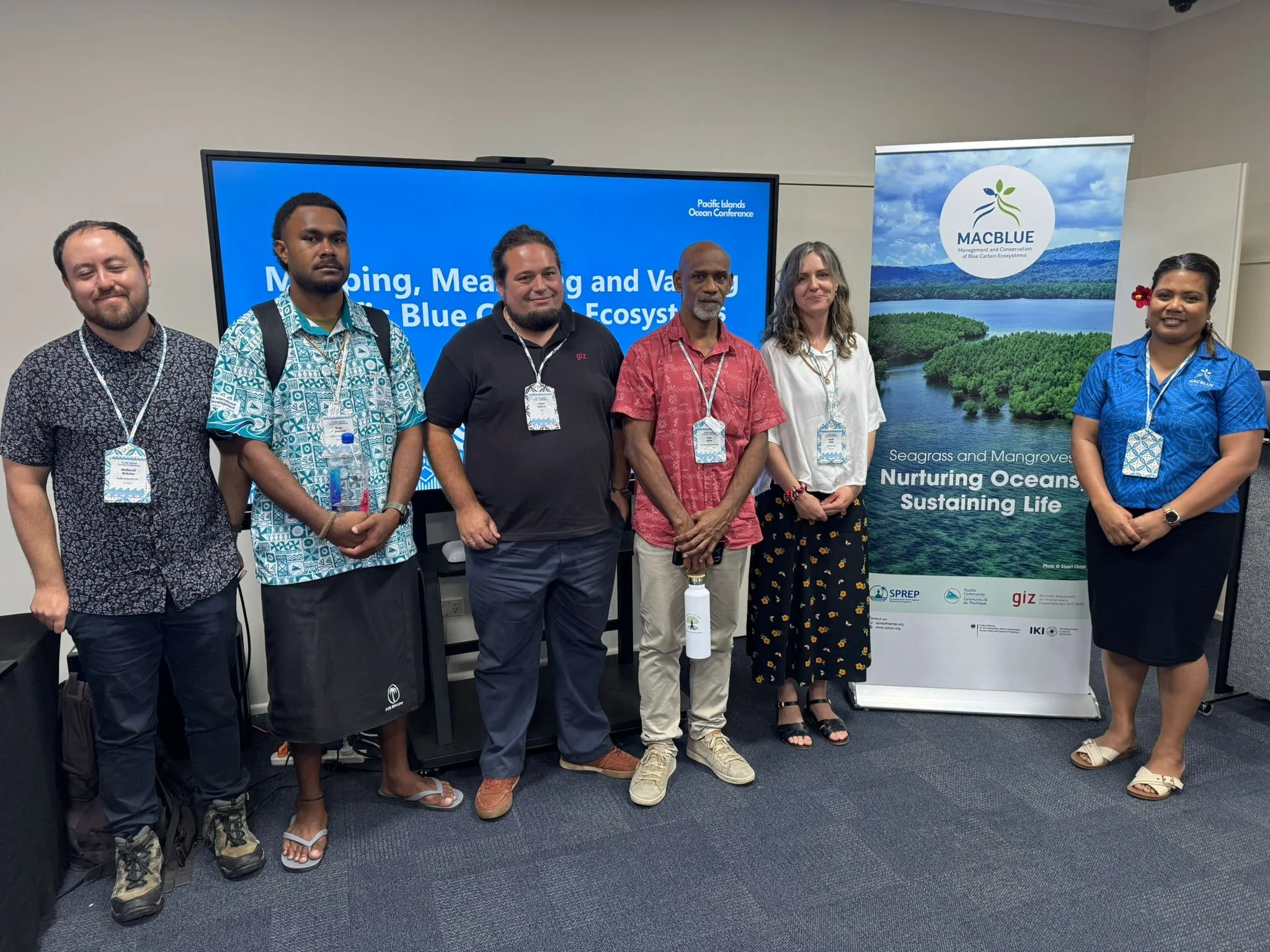Pacific Blue Carbon in Action
Speakers during the session on Mapping, Measuring, and Valuing Pacific Blue Carbon
7 October 2025, Honiara, Solomon Islands – The MACBLUE project joined regional partners at the Pacific Islands Conference on Ocean Science and Ocean Management (PICOSOM) last week, contributing to key discussions on the future of coastal and marine ecosystem management across the Pacific.
The PICOSOM is a regional event dedicated to fostering meaningful dialogue on ocean-related issues and was held at the Heritage Park Hotel from Monday 29 September to Friday 3 October 2025.
Together with partners from the Secretariat of the Pacific Regional Environment Programme (SPREP), Pacific Community (SPC) and the Wildlife Conservation Society (WCS), MACBLUE co-organised and supported sessions that showcased both scientific advances and community-led approaches to sustaining the region’s blue carbon ecosystems.
During the session on Mapping, Measuring, and Valuing Pacific Blue Carbon, moderated by Turang Teuea (SPREP), participants explored the latest scientific work on mangrove and seagrass ecosystems across the Pacific.
Presentations from researchers and practitioners representing Fiji, Solomon Islands, and across the region covered carbon and nitrogen stock assessments, biodiversity baselines, and the valuation of ecosystem services.
The discussion emphasised how the latest science can guide policy and decision-making, strengthening Pacific countries’ capacity for climate resilience, sustainable development, and international reporting. Participants also identified key data gaps, research needs, and opportunities for greater standardization of monitoring approaches, contributing to a Pacific-wide synthesis of blue carbon knowledge.
In the afternoon, Raphael Linzatti, MACBLUE Project Director, moderated a session on Community Leadership and Integrated Approaches to Blue Carbon Ecosystems. This discussion focused on the leadership of Pacific communities in conserving mangrove and seagrass ecosystems, with presentations from Papua New Guinea, Fiji, and Vanuatu illustrating how customary governance, traditional knowledge, and livelihood opportunities are being integrated into blue carbon management.
“This conference was an excellent opportunity for cooperation with all the different stakeholders, and to share and develop joint ideas for the sustainable management of our blue carbon ecosystems,” Raphael Linzatti said.
“What stood out was the willingness of communities and scientists alike to work together. Sharing knowledge across countries helps us all understand what works best in conserving mangroves and seagrass while supporting livelihoods,” he added.
In sessions related to Information Portals, MACBLUE colleague Shyam Lodhia, together with Nicholas Metherall (SPC), presented insights into Digital Earth Pacific and how it has been applied within the MACBLUE project to map seagrass and mangrove ecosystems. A highlight of their contribution was the live demonstration of the recently published seagrass maps, showcasing how open geospatial data can support evidence-based decision-making and regional collaboration in coastal ecosystem management.
Across all sessions, the strong engagement of partners and participants demonstrated the Pacific’s commitment to collaborative ocean management. The PIOC provided an excellent platform for exchange, inspiring reflection on future cooperation in Blue Carbon Ecosystems and broader coastal management initiatives.
“The real impact of this conference is seeing ideas turn into action. When regional partners and communities come together, we can create solutions that are both scientifically sound and socially inclusive,” Raphael Linzatti concluded.


